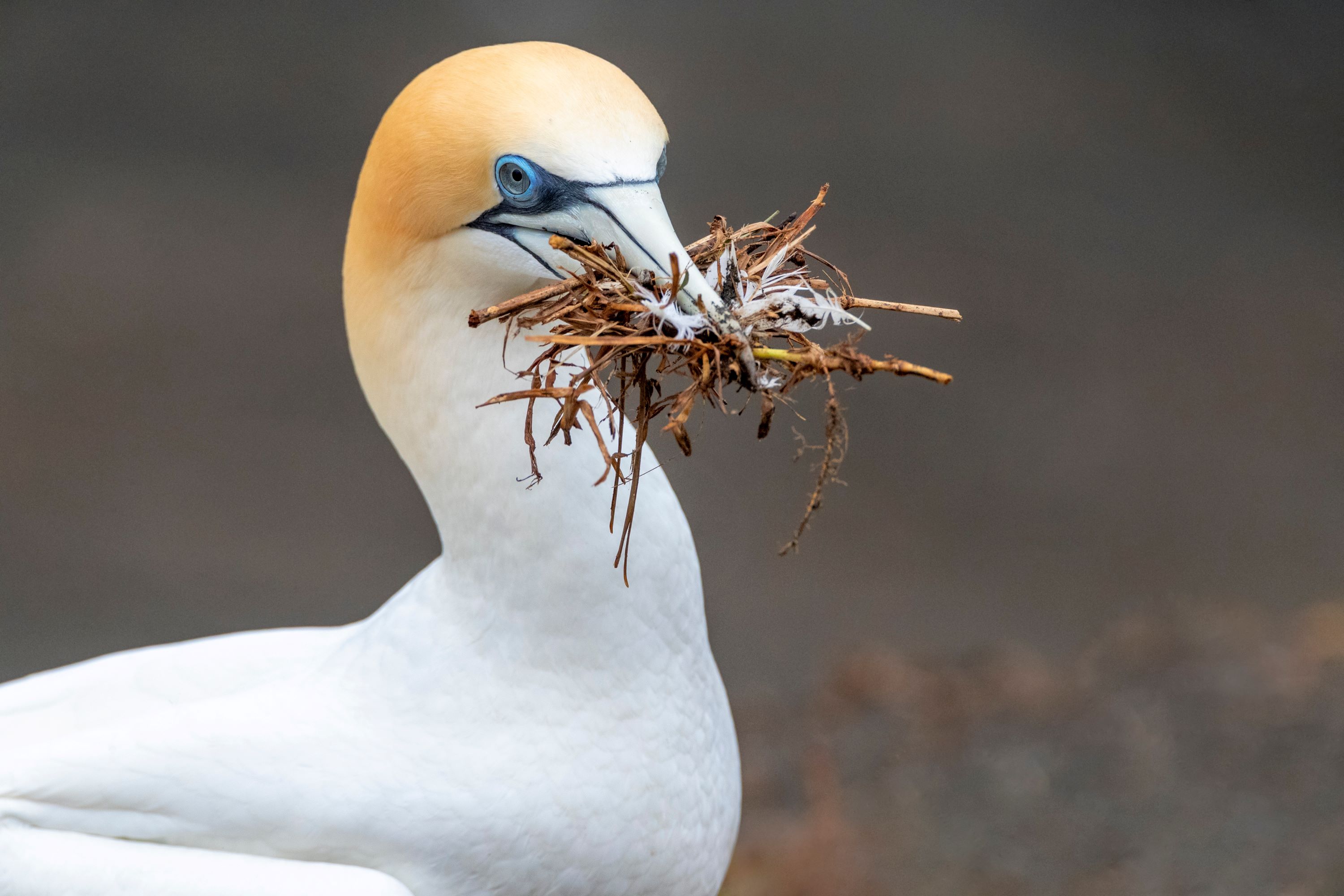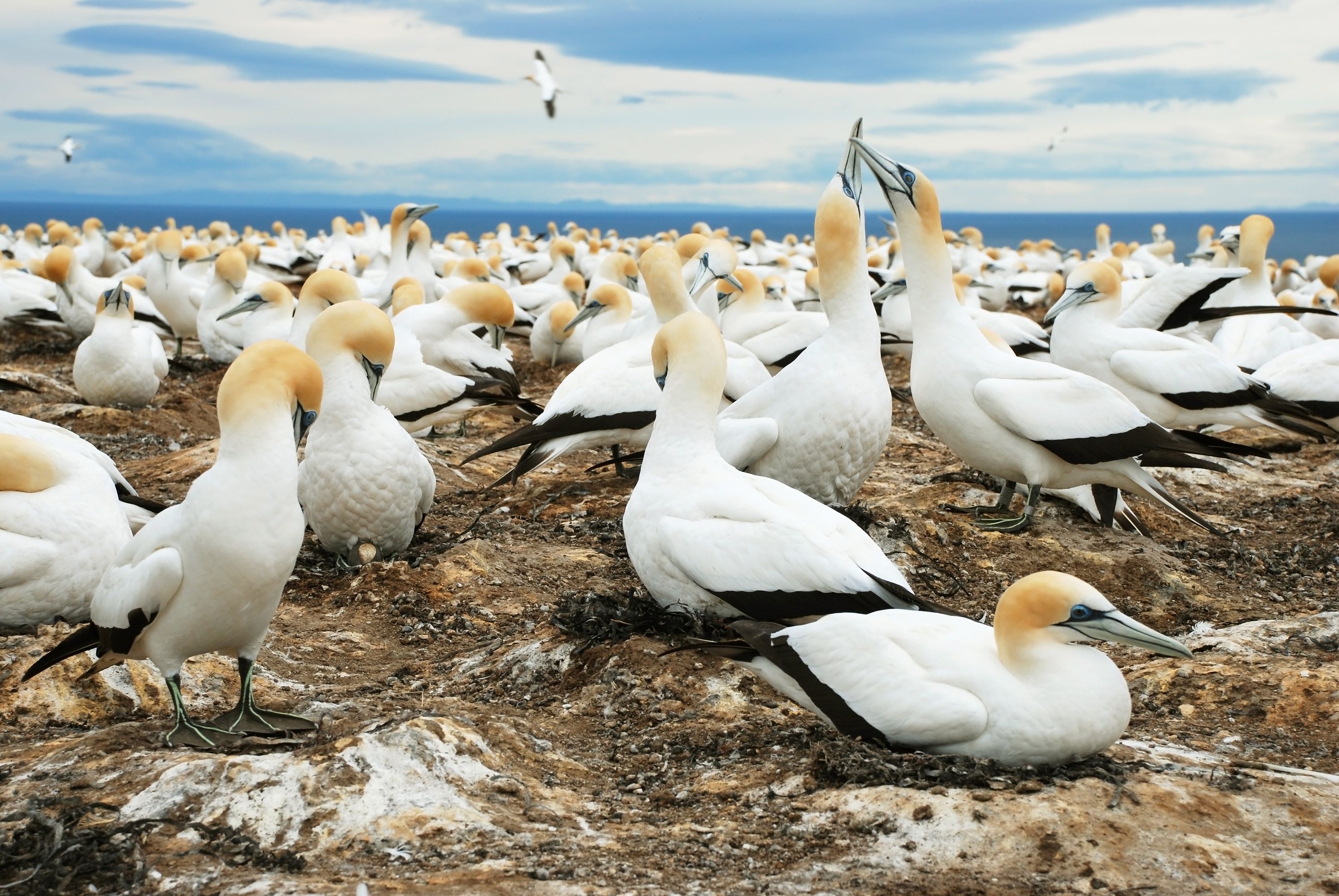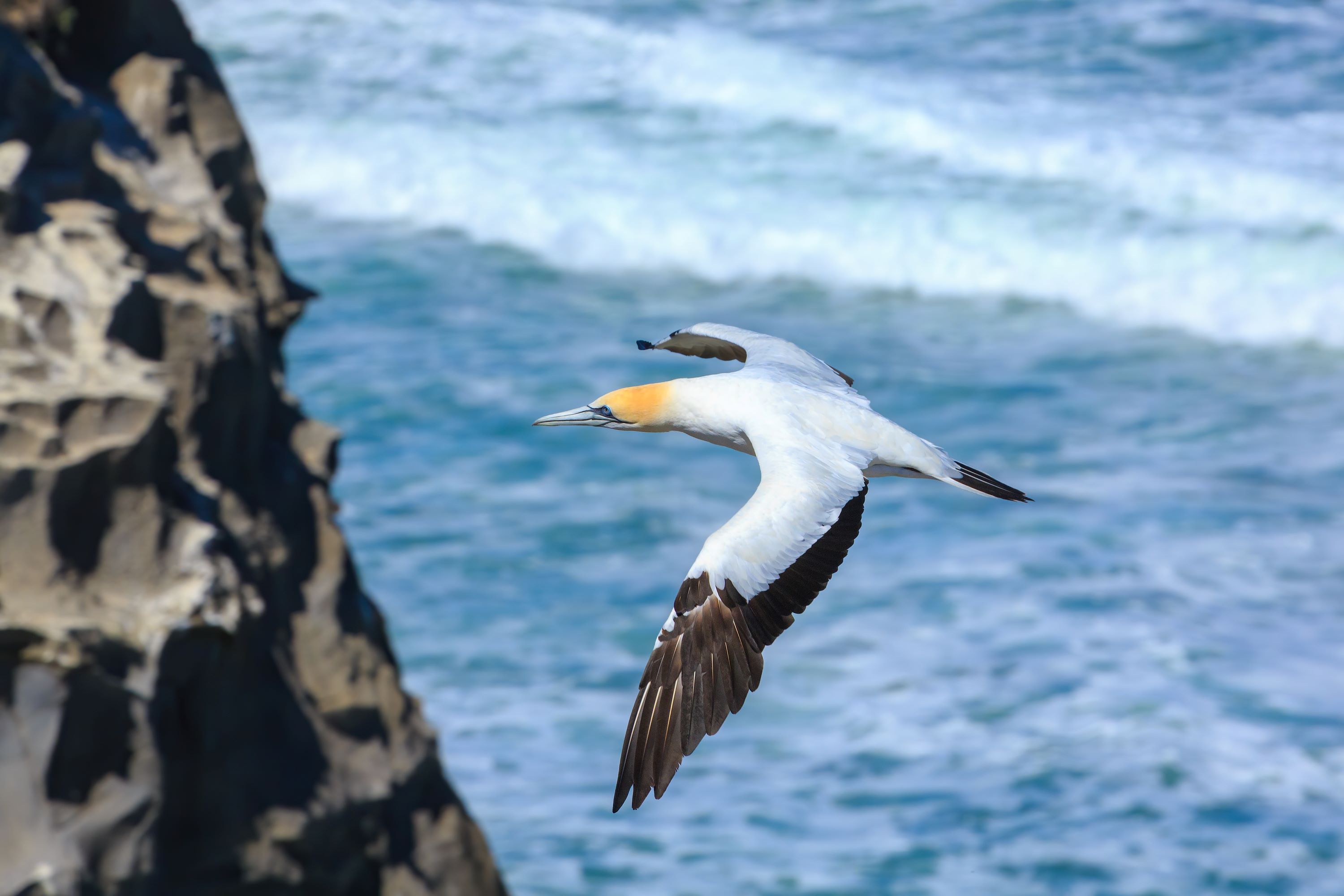
The Australasian Gannet: The Ocean's Acrobat, Morus serrator
Introduction to the Australasian Gannet
The Australasian Gannet, scientifically known as Morus serrator, is a large seabird that is a member of the Sulidae family. Renowned for its incredible diving ability and striking appearance, this species, which dwells in the southern hemisphere's oceans, particularly around Australia and New Zealand, is a fascinating subject for bird enthusiasts and ornithologists. Its life, marked by impressive aerial acrobatics and dedicated parenting, offers a captivating insight into the adaptability of seabirds.
Physical Description
Adult Australasian Gannets are notable for their size, reaching about 84-94 cm in length, with a wingspan of up to 1.8 meters. They exhibit a distinctive appearance with predominantly white plumage, dark-tipped wings, and a pale golden-yellow head. Their long, pointed beaks are ideally suited for high-speed diving, and their blue-grey eyes are positioned forward, providing excellent binocular vision.
Habitat and Distribution
The Australasian Gannet is primarily found in the coastal waters of New Zealand, Australia, and Tasmania. They are pelagic birds, spending a significant portion of their lives at sea. These birds breed on coastal islands, favoring locations such as the North Island of New Zealand and Bass Strait islands between Australia and Tasmania for their nesting colonies.

Feeding Habits and Diet
Their diet primarily consists of fish, which they catch through skilled plunge-diving. Australasian Gannets can dive from heights of 30 meters, reaching speeds of 100 km/h as they enter the water. This technique allows them to catch fish swimming near the surface, including species like pilchards, anchovies, and mackerel.
Breeding Behavior and Nesting
Australasian Gannets are colonial breeders, nesting in large, densely populated colonies on offshore islands. They are monogamous, often forming long-term pair bonds. Nest building is a collaborative effort, with nests constructed from seaweed, grass, and other materials found in the marine environment.
Courtship and Mating Displays
Courtship is a significant aspect of the Australasian Gannet's breeding cycle. Pairs engage in elaborate rituals, including bill-fencing, mutual preening, and synchronized head-bobbing. These displays reinforce the pair bond and are integral to maintaining a stable relationship during the breeding season.

Egg Laying and Incubation
The female typically lays one egg per breeding season. Both parents share incubation duties, which last approximately 42-46 days. Unique to Sulidae birds, Australasian Gannets use their webbed feet to keep the egg warm, an adaptation that sets them apart from other seabirds.
Chick Rearing and Fledging
Chick rearing is a demanding period, with both parents involved in feeding the chick through regurgitation. The chick grows rapidly, spending about 3-4 months in the nest before fledging. The first flight, a plunge from the nesting cliff into the sea, marks the beginning of the juvenile gannet's independent life.
Conservation Status and Challenges
Currently, the Australasian Gannet is not classified as endangered, but it faces various threats. These include habitat destruction due to coastal development, entanglement in fishing gear, and pollution. Climate change and its impact on ocean currents and fish populations also pose significant risks.
Conclusion: A Testament to Seabird Resilience
In conclusion, the Australasian Gannet (Morus serrator) is an exceptional example of seabird resilience and adaptation. Their unique lifestyle, characterized by breathtaking diving skills, intricate social behaviors, and dedicated parenting, highlights the complexity and wonder of marine bird life. While the Australasian Gannet is not found in Utah's inland ecosystems, its presence in the southern hemisphere's oceans underscores the global importance of protecting marine biodiversity and the need for concerted conservation efforts across the world's oceans.